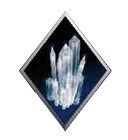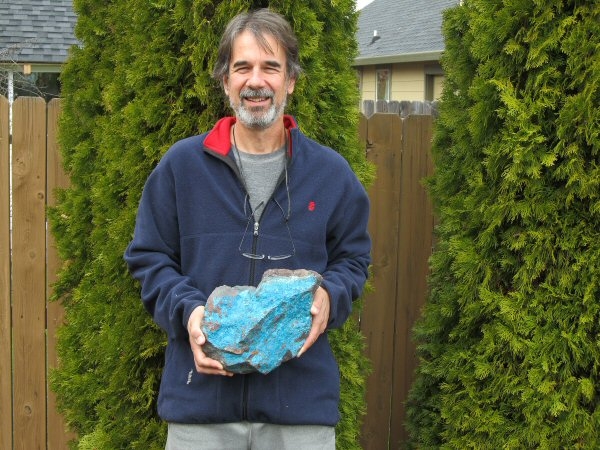

On a fine winter’s day in January, I head out of the office, leaving “the boss” in charge. (wink) Two year old Granddaughter Rose takes right to the position, and loves to do anything she’s not actually supposed to!
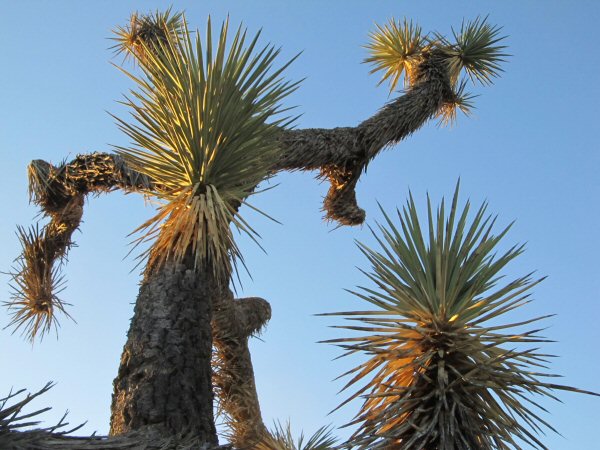
If I drive all day from Southern Oregon – and there’s not much day in January – I can make it to the land of the Joshua Trees, in the Southern California high desert, out east of Bakersfield, on Highway 58, past Tehachapi, and Mojave.
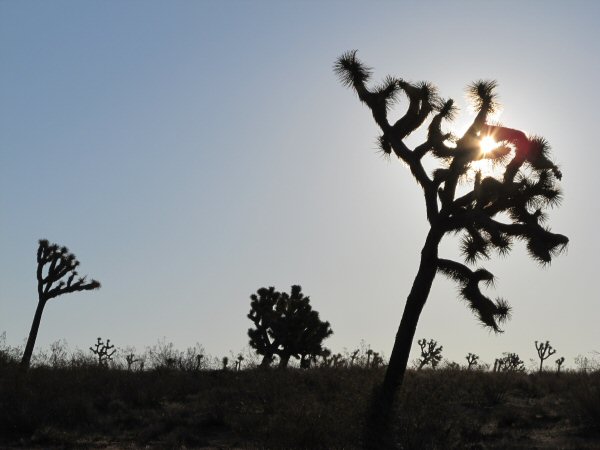
Ordinarily, the landscape outside my car window changes slowly and almost imperceptibly on these long journeys, from the plentiful rivers and pines of Oregon, to the stark and arid landscapes of the American southwest. But when the Joshua Trees appear, it seems abrupt, almost as if one has opened the door upon another world.
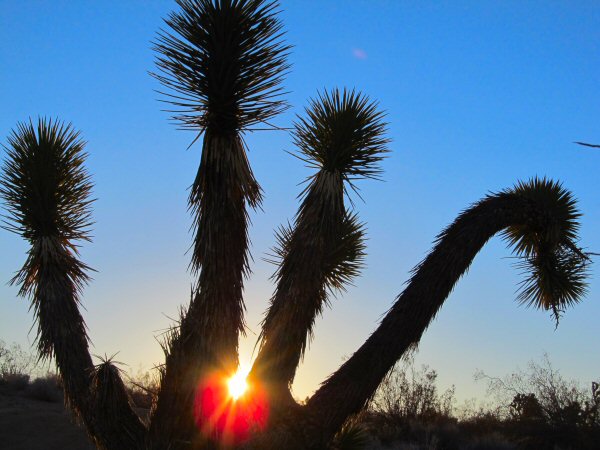
I can’t help but stop and take a few pictures of these absurd relatives of grasses and orchids, with their bowed and twisted forms somehow both testing and renewing my belief in the magic of life, all at once!
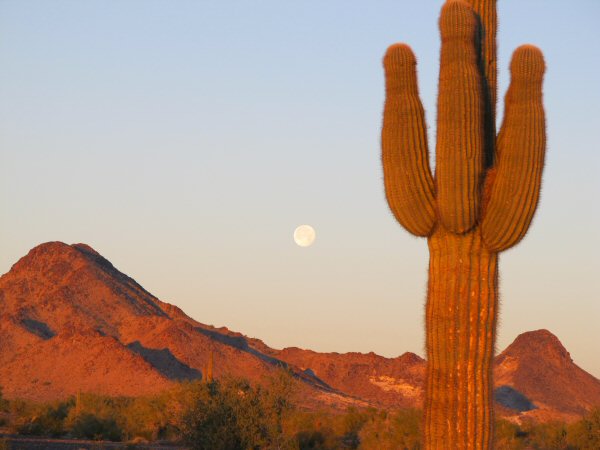
I make it down into Arizona – the home of winter time gem shows, and also some fun field collecting opportunities. Here a full moon is setting, as the sun peeks over the horzion in the Castle Dome area of Quartzsite, Arizona.
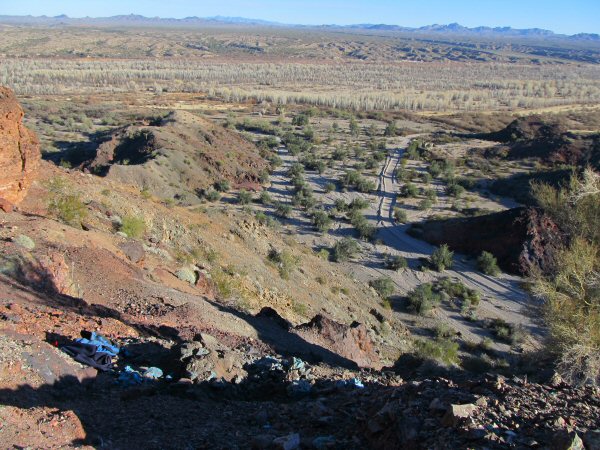
About 50 miles from Quartzsite, is the famous Planet Mine, which is actually a cornucopia of unconsolidated shafts, adits, and prospects in the reddish copper bearing hills of the Buckskin Mountains. I’m working in some tailings dumps on the north side of the Buckskins, overlooking the floodplain of the Bill Williams River.

As mentioned, there are tunnels everywhere in this area. Soon after directions to the mine appeared in Minerals of Arizona written by Neal Bearce, the State of Arizona renewed their fencing efforts, and attempted to block off the most accessible entrances. As you can see, bright blue seams of chrysocolla in the rock above the entrance tempt the rockhound to go chasing down the tunnel.
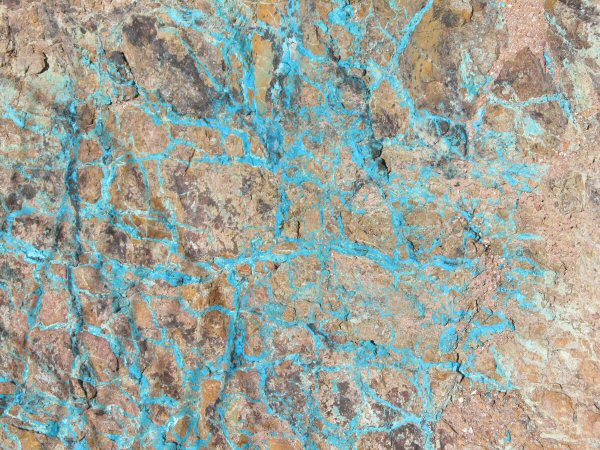
A closer examination of the wall just outside of a tunnel entrance, shows a fascinating webwork of beautiful, robin’s egg blue chrysocolla, running this way and that, like lightning through the rock. Miners working the Buckskin Rawhide Fault zone have removed more than 25,000 tons of copper over the years, and also a whopping 15,000 ounces of gold!
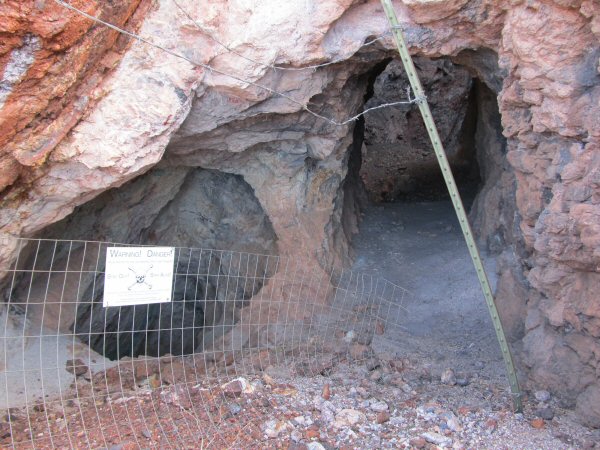
A placard on fencing at the entrance to a tunnel group warns of the danger of entering old mine adits and shafts, but as you can see, determined and perhaps foolhardy folks have gone ahead and pryed their way in. This isn’t the most unstable rock I have ever seen in a tunnel, but any tunnel can be dangerous for a number of reasons.
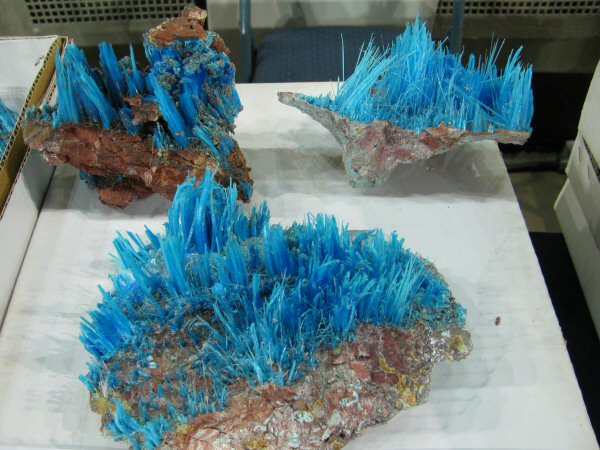
Field collector Michael Shannon did make an important find of gorgeous long tufts of chalcanthite a few years back, in an underground room, in one of the tunnels of the Planet Mine. But he is an experienced field collector, with a family history of minerals and mining. For the beginning rock collector, or if you are a first timer at a site, and you haven’t done any research on the mines in the area, it is wise (and legal) to stay out of abandoned mine tunnels.
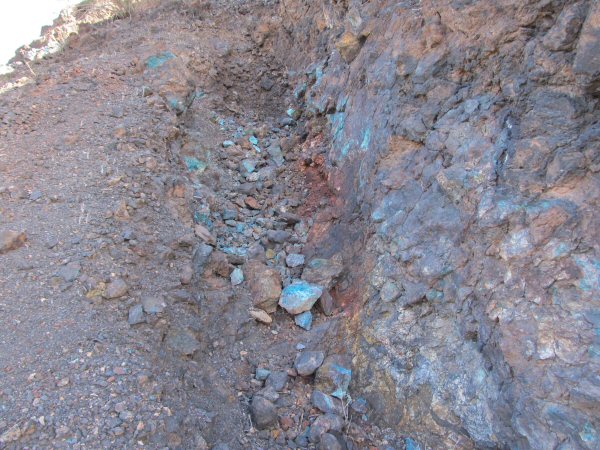
You can typically do just as well by moving rock outside the tunnels, as rockhounds have done here, exposing one of the abundant seams of chrysocolla in the area, and safely gaining access to some beautiful collectibles.
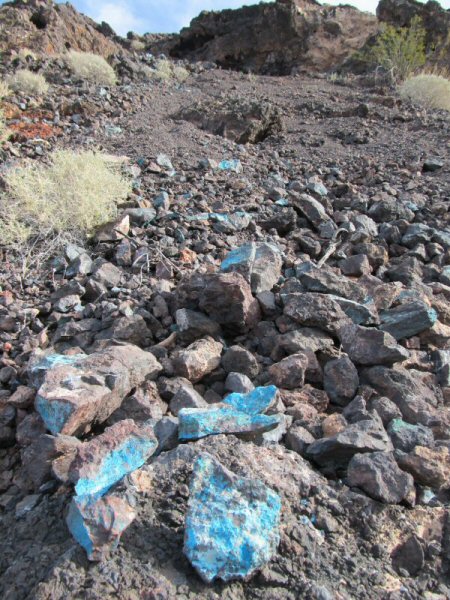
This is just one of the extensive mine dumps that dot the area of the Planet Mine. The entire slope here is littered with boulders containing seams of chrysocolla. Even if you’ve never collected rocks before, you simply can’t go wrong here.

Or you can choose to do as I am doing, and methodically dig through the tailings to a depth of about two feet, which yields piece after piece with the prized blue color. Basically all the tailings rock came out of those tunnels, so digging through the dumps is a safe way to get a look at what was inside.

The color of the chrysocolla here is remarkable. It’s as bright as I think I have ever seen it.

Most material consists of thin seams of chrysocolla up to about 5 mm but for me, the prized specimens are the ones that contain bright pockets of sparkly, translucent quartz druze over aqua blue chrysocolla.

There are enough prospects and dumps in this area that a rockhound could make numerous return trips over a lifetime. I’m sure that there are still undiscovered copper deposits in this area just waiting for you. Here, a lovely coating of white, sparkly druzy quartz contrasts against the blue, and comes alive in the sunlight, in a way that the camera cannot convey.

A super sweet little pocket of bubbly druze!

A couple of malachite spheres pose like glacial erratics in a crystalline landscape.

Black and blue druze combine in a stunning little pocket.

One half of this rock is coated by a sugary sparkle of druze, while the other side sports bright blue chrysocolla.

A unique piece of lovely, snow white quartz druze.
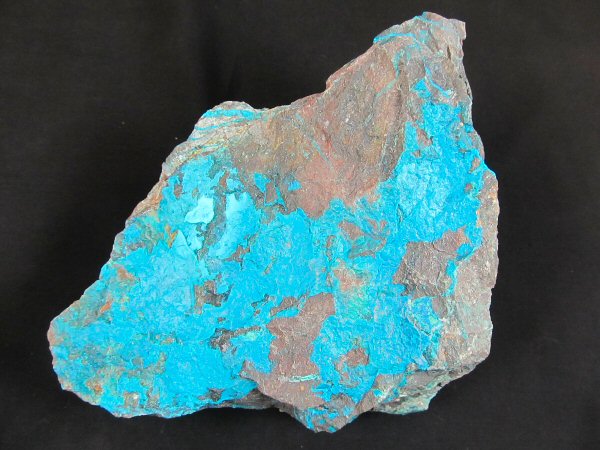
A great specimen rock of Arizona chrysocolla!
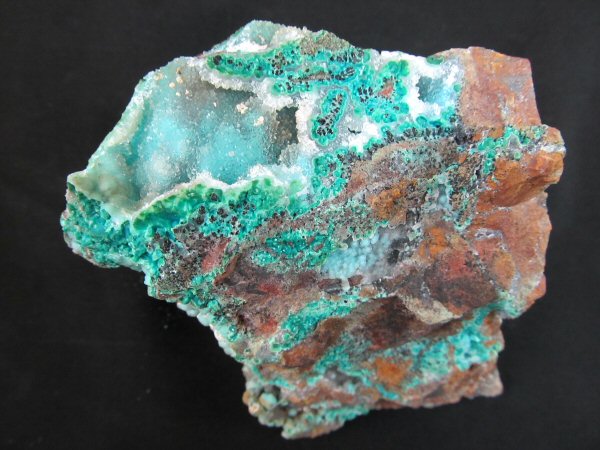
How about this gorgeous beauty?

An excellent pocket of intensely colored, pristine druzy chrysocolla.
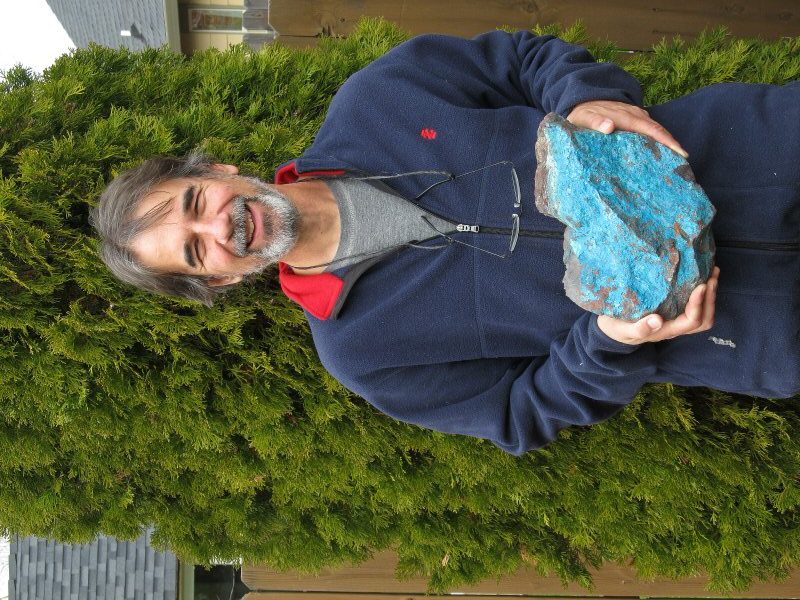
What was I thinking? – that’s the question rockhounds may sometimes ask themselves after the fact. This single chrysocolla boulder added 35 pounds to my already sagging pack, and I had to pack it down off the mountain, over the better part of a mile. Plus I missed one trail on the way down and blundered off, adding unwanted distance to my arduous carry. But for some reason, I had to have this pretty rock!
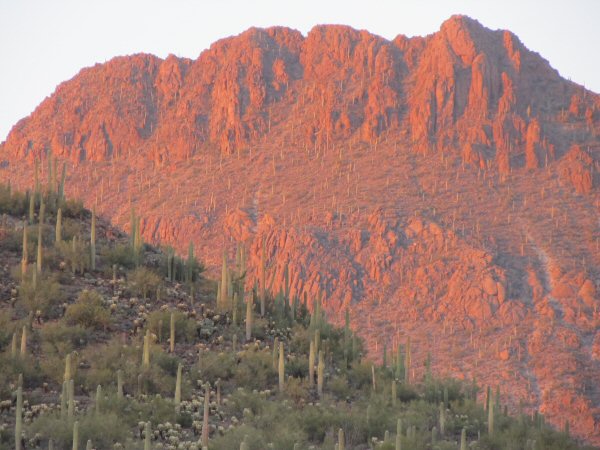
Reluctantly, I leave the Planet Mine, and get back on the Arizona highways, heading for the well known Finch Mine, near the mining town of Hayden, Arizona. Here the sun is coming up on another perfect January day for rockhounding.

The great Cactus Plain, south of the Buckskin Mountains was used by the US Military under General Patton, to train for the invasion of North Africa, during World War II. The harsh but beautiful desert terrain tested the men and machines of war.
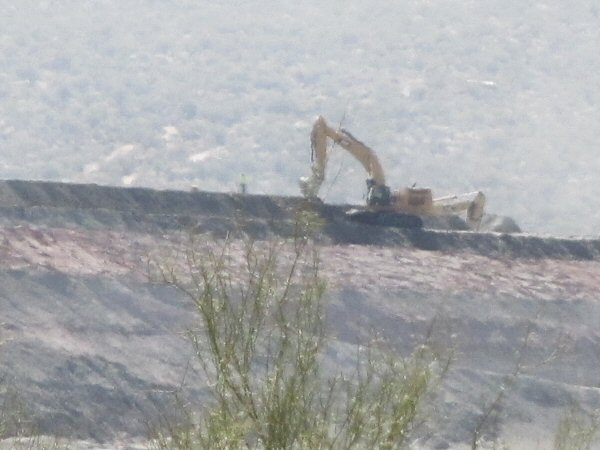
The history of the town of Hayden, Arizona is checkered with the environmental issues caused by Big Copper mining. Here a giant shovel works atop incredibly large tailings piles that look like small hills from the distance. It becomes like an impressionistic painting in the wavering heat of a January day.
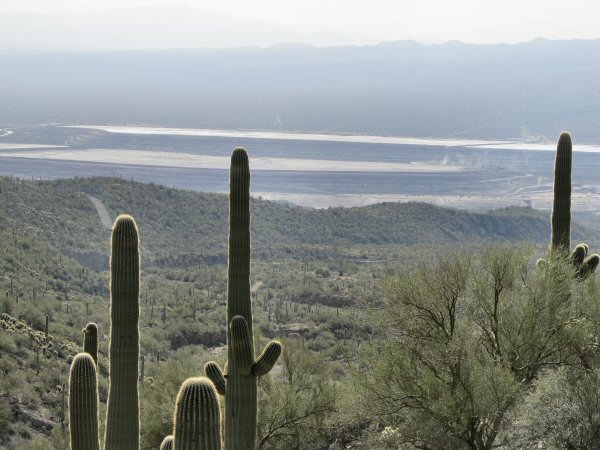
Climbing the Hills above Hayden, one can see the monster tailings mounds left over from the world’s insatiable appetite for copper. The mounds are over a mile long, and fill the entire valley of the Gila River in this area.
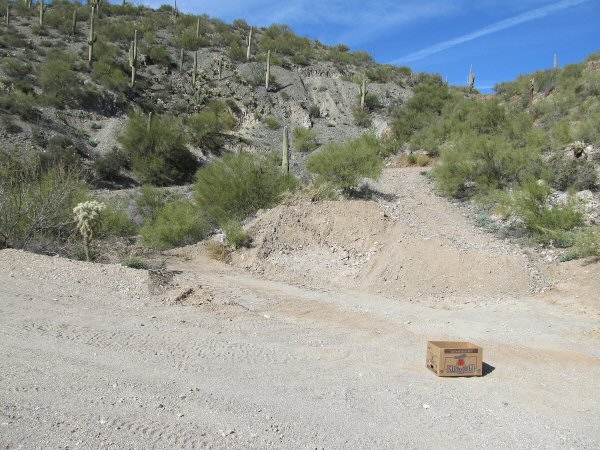
A short spur road leads steeply up a small excavated canyon to the Finch Mine and beyond.
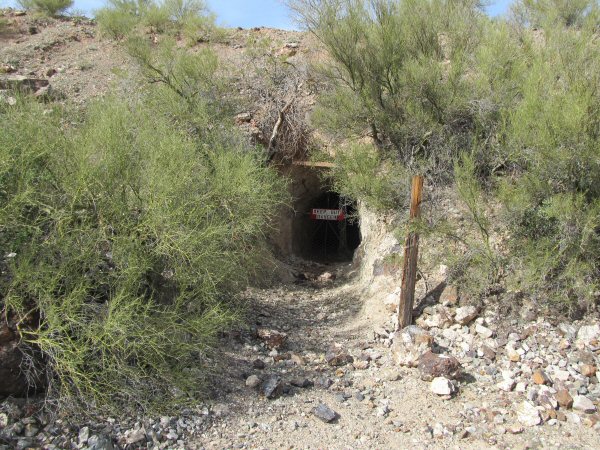
As mentioned, the Finch Mine though small, is a rockhound favorite, and a Mindat locality which is what brought Jan and Petr out.
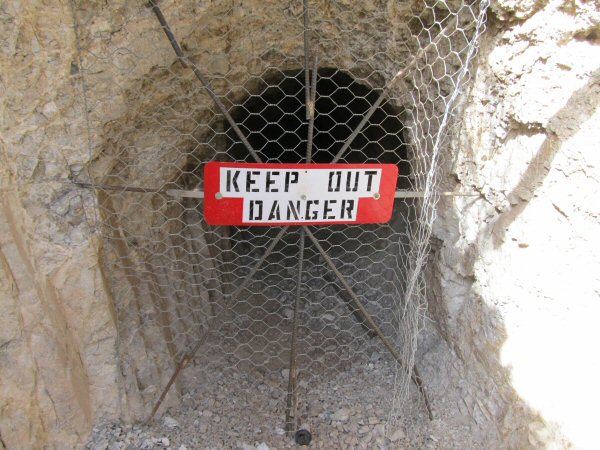
Here again the state of Arizona has fenced off the entrance, and again, people have pryed back the fence. But as far as I’ve ever heard, there’s no real reason to go in the adit, unless you are a mine tunner bagger.

The real prizes lie within tiny vugs and pocketing in the rocks of the Finch tailings pile, which were tossed out as tunneling proceeded in this abandoned lead/copper mine. Be careful going through these rocks though, as I did see one scorpion which appeared out of nowhere, from underneath the pile.

Always keep an eye out for hidden danger!
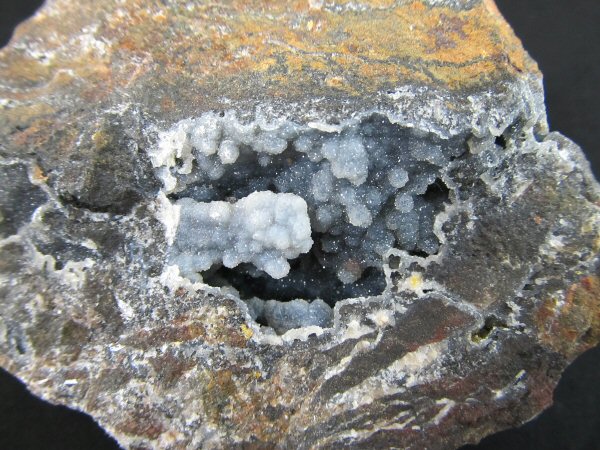
I love druzy material, and the rocks in the Finch Mine tailings pile provide lots of small pockets of sparkly black druze, some with exquisite little botryoidal formations.
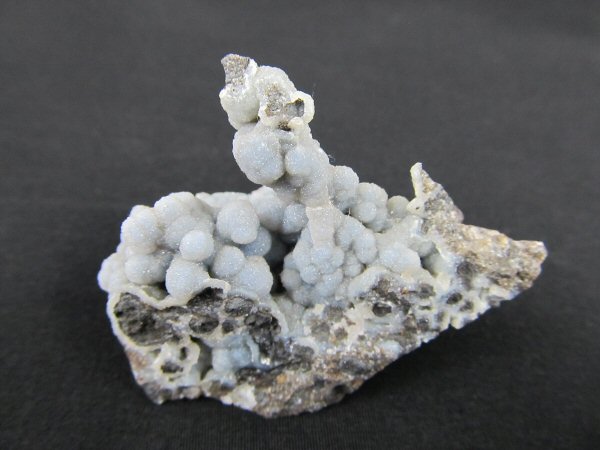
Another example of the small, but really aesthetic specimens that will be found with the patient breaking through the rock on the tailings pile.
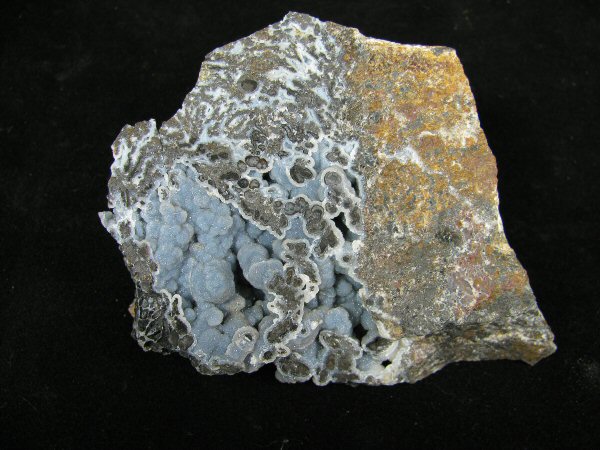
Some of the druze occurs over a soothing light blue layer of hemimorphite adding to the beauty.
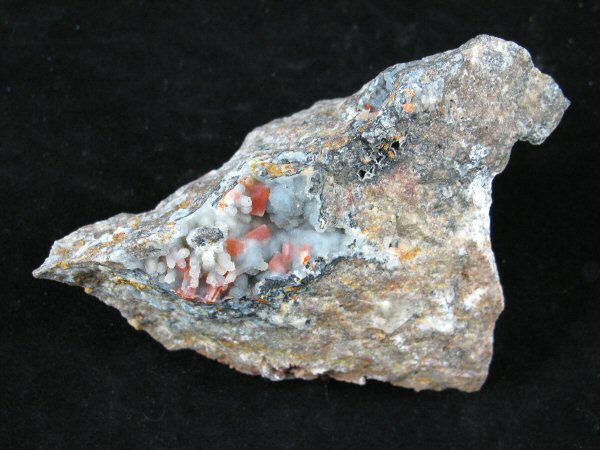
But the real prize here is the uncommon pocket where druze has coated over bright orange tabs of wulfenite.
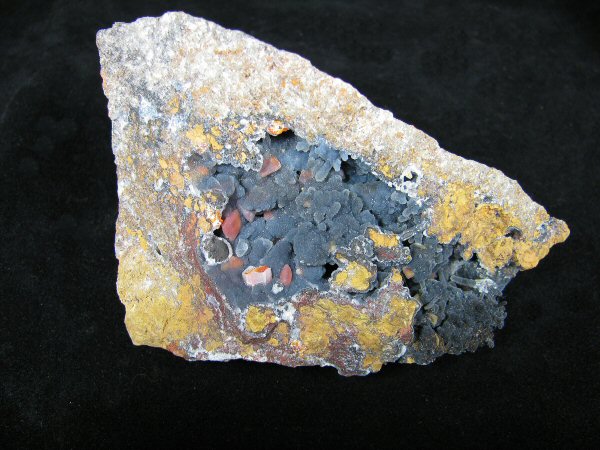
Here’s a wonderful vug of black druze with the classic orange wulfenite standing out.
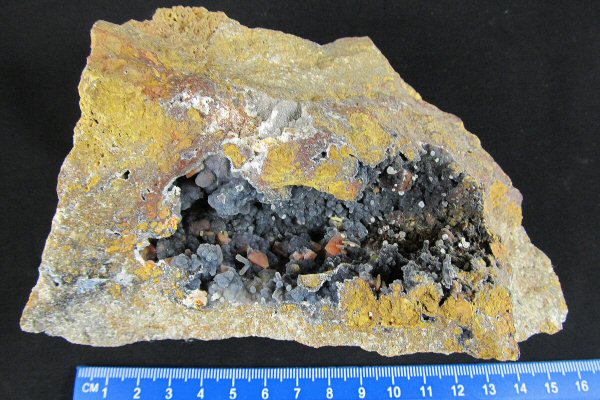
My best vug ever! Really quite a large pocket for this locality. 
I sit on the pile, happily breaking rocks until sunset, thankful for any amount of time I can spend out here in this gorgeous landscape. Tomorrow, I will have to get to “real” work, as the Tucson gem shows unfold, but the perfection of this moment is a memory to hold onto.
